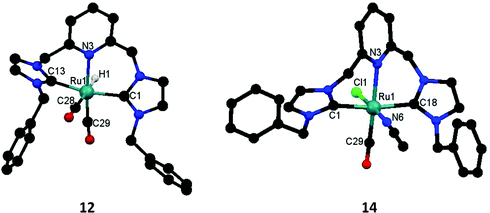 Open Access Article
Open Access ArticleCreative Commons Attribution 3.0 Unported Licence
Correction: A binary catalyst system of a cationic Ru–CNC pincer complex with an alkali metal salt for selective hydroboration of carbon dioxide
Chee Koon
Ng
ab,
Jie
Wu
*c,
T. S. Andy
Hor
*bcd and
He-Kuan
Luo
*b
aNUS Graduate School for Integrative Sciences and Engineering, Center for Life Sciences, #05-01, 28 Medical Drive, Singapore 117456, Singapore
bInstitute of Materials Research and Engineering, Agency for Science, Technology and Research, #08-03, 2 Fusionopolis Way, Innovis, Singapore 138634, Singapore. E-mail: luoh@imre.a-star.edu.sg
cDepartment of Chemistry, National University of Singapore, 3 Science Drive 3, Singapore 117543, Singapore. E-mail: chmjie@nus.edu.sg
dDepartment of Chemistry, The University of Hong Kong, Pokfulam, Hong Kong SAR, China. E-mail: andyhor@hku.hk
First published on 12th December 2016
Abstract
Correction for ‘A binary catalyst system of a cationic Ru–CNC pincer complex with an alkali metal salt for selective hydroboration of carbon dioxide’ by Chee Koon Ng et al., Chem. Commun., 2016, 52, 11842–11845.
In the original article, compound 14 was reported as a PF6− salt. However, the presented structural data were representative of a PF4− salt due to unsatisfactory crystal structure refinement.
This compound has therefore been re-crystallized and the crystallographic analysis repeated. The new diffraction data have been correctly and satisfactorily refined as a PF6− salt. We provide below a new image and caption for Fig. 1, while corrected ESI files have been uploaded in place of those originally supplied.
The associated carbene bond data description on page 11843 should therefore also be amended to ‘The two CNC carbene ligands are trans to each other (CNHC–Ru–CNHC = 168.8°–171.0°) and the Ru–CNHC bond lengths of 2.08–2.10 Å are consistent with literature values.’
We are thankful to the CCDC for kindly notifying us of this irregularity.
The Royal Society of Chemistry apologises for these errors and any consequent inconvenience to authors and readers.
| This journal is © The Royal Society of Chemistry 2017 |

